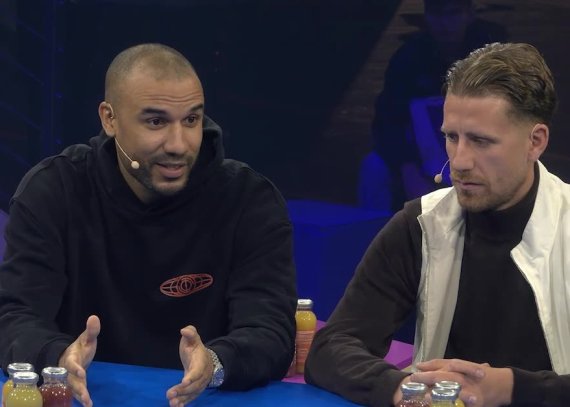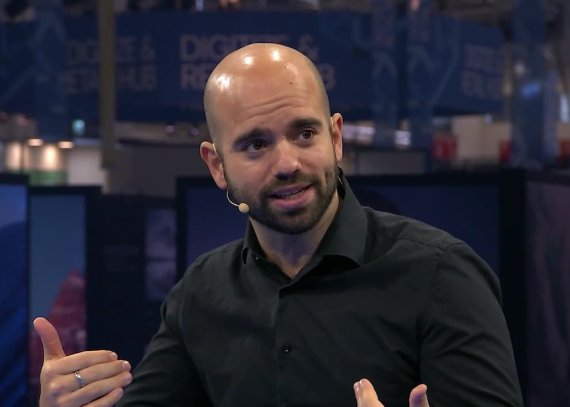At its core, small-sided football is about revisiting the game's simplicity. Instead of sprawling pitches and 11 players on each side, these matches are played on smaller fields with fewer players—typically 5 or 6 a side. The result? A faster, more dynamic version of football that echoes the street games many of us grew up playing. But what exactly does this mean for the sports industry and what is so fascinating about small-sided football?
Why Smaller Pitches Resonate
The appeal of smaller pitches lies in how they transform the game's dynamics. Players are forced to make quicker decisions and develop a heightened sense of awareness. There’s no room for passive play; every individual contributes actively. This environment fosters creativity and teamwork while showcasing raw skills. Fans appreciate this condensed action as it strips the game down to the basics - talent, strategy, and passion.
This format can be a career-changing opportunity for players. The smaller field evens the playing field, rewarding finesse over sheer physicality. For instance, players who might struggle with the athletic demands of traditional football can shine in this environment by leveraging their technique and footballing intelligence.
Nostalgia Meets Innovation
The Baller League, discussed at a panel in ISPO 2024, exemplifies the fusion of nostalgia and innovation in small-sided football. It recreates the essence of street football, where friends gather for impromptu games, but elevates it with professional organization and storytelling. Daniel Donaldson, CMO of the Baller League, highlighted that the league’s core is about rediscovering the joy of pure football, free from unnecessary complexities.
Marco Raimondo Metzger, team captain of Beton Berlin, described how playing in the Baller League brought back memories of childhood games.
It's like playing back in the years when I was young, when I was playing with my friends in my childhood, and it gives me the same feeling when I'm out there playing football.
By evoking such deep emotional connections, small-sided football appeals to both seasoned professionals and casual players.

One of the defining features of small-sided games is their intensity. The reduced pitch size and fewer players mean there’s little room for downtime. Players are constantly involved, making decisions, passing, shooting, and defending in rapid succession. This fast-paced action is a stark contrast to the slower buildups often seen in traditional 11-a-side matches.
Keeping Fans Hooked
For spectators, the brisk pace of small-sided games is an undeniable draw. The compressed action ensures that there is never a dull moment.
Felix Starck, CEO of the Baller League, shared that younger audiences, despite their reputation for shorter attention spans, are captivated by the league’s high-energy gameplay. He noted
"People are watching Baller League matches for six hours in a row."
In addition, the shorter match durations, often around 30 minutes, align perfectly with modern viewing habits. Spectators can enjoy the thrill of the game without committing an entire afternoon, making these matches perfect for busy people or families with young children.
Catering to Modern Attention Spans
The shorter games are also a clever response to changing attention spans. Platforms like TikTok and Instagram have normalized brief, engaging content, and small-sided football aligns seamlessly with this trend. By packaging high-quality football into shorter, more digestible segments, these leagues are capturing the imagination of a new generation of fans who crave fast and frequent entertainment.
Traditional football, with its rigorous academies and professional structures, often leaves little room for players who don’t fit the mold. Small-sided football offers an alternative. It’s a space where skill, creativity, and passion take precedence over athleticism or formal training.
An Opportunity for Overlooked Talents
Small-sided leagues create avenues for players whose potential might otherwise go unnoticed. Daniel Donaldson highlighted that players who didn’t fit into traditional systems, like professional academies, could still find their place here. The format values technical skill and game intelligence over attributes like speed or endurance, opening the door for diverse talents to thrive.
In a sport traditionally dominated by strict structures, small-sided football serves as a game-changer. By leveling the playing field, it provides a platform for players who may have been overlooked to showcase their skills and passion. As Daniel Donaldson put it,
If you have the skills, you can prove it. Even though you are not able to train three times a day or maybe you didn’t fit in the academy system, come to the Baller League.
Rethinking the Talent Pipeline
This approach provides a blueprint for rethinking talent pipelines across the sports industry. By integrating small-sided formats into their scouting processes, professional clubs and academies can identify and nurture talent that might not fit traditional molds. In fact, many organizations are already using data-driven scouting and AI-powered performance analysis to identify promising players in small-sided games. Investing in alternatives to professional football, rather than solely relying on academy systems, can widen the talent pool and create opportunities for a more diverse group of athletes to succeed.
Expanding the Fan Base
Not only players, but this format of the game also broadens its fan base. By blending gaming culture with traditional sports, leagues like the Baller League attract audiences who might not typically follow football. Gamers, for instance, often transition into fans due to the competitive yet relatable nature of these games. Families and casual viewers also find the shorter matches more approachable, making small-sided football an ideal entry point for those new to the sport.
Another hallmark of small-sided games is the integration of entertainment into the sporting experience. These leagues are not just about the game on the pitch; they’re about the stories, the rivalries, and the spectacle.
The Rise of "Sportainment"
In small-sided football, the emphasis on storytelling and entertainment has led to the term “sportainment”—a blend of sport and entertainment. Marco Raimondo Metzger explained how the Baller League uses narratives and rivalries to captivate audiences. This approach creates a multi-dimensional experience where fans are as invested in the drama off the pitch as they are in the action on it.
Building Community Through Storytelling
Storytelling also fosters a sense of community among fans. By introducing theatrical elements, dramatic rivalries, and engaging narratives, leagues like the Baller League make their events more than just matches; they become cultural phenomena. This approach ensures that fans remain emotionally connected to their favorite teams and players, deepening their loyalty over time.
The traditional 90-minute football match, while timeless, can feel like a commitment in today’s fast-paced world. Small-sided games, with their shorter durations, align perfectly with modern lifestyles. They cater to those who want to enjoy high-quality football without dedicating an entire afternoon.
This shift is particularly appealing to younger audiences and families. As Felix Starck noted,
My six-year-old son can barely sit through a 90-minute match, but he absolutely loves these shorter games.
By adapting to the needs of modern audiences, small-sided football is ensuring that the sport remains relevant and accessible.
As Daniel Donaldson pointed out,
At the end of the day, football should convince everybody to tune in.

Small-sided games are not confined to local playgrounds or niche leagues. They are expanding globally, with leagues being launched in major markets like the UK and the US. This growth is driven by a recognition that these games offer something unique: a blend of tradition and innovation that appeals across demographics.
The international expansion also brings opportunities for cultural exchange and competition. Some leagues are already envisioning a “Champions League” format for small-sided games, where teams from different countries can compete on a global stage. youngSuch initiatives could further elevate the format, making it a staple in the football ecosystem.
At ISPO 2025 (30 NOV. – 02 DEC.), Small-Sided Football will once again be in the spotlight – as a case study for how new game formats connect sport, community, and business. If you want to understand where football is headed – and how the sports industry can benefit – this is where the insights begin.
Small-sided football is changing the way the sport is played and consumed, offering valuable insights that are particularly relevant to modern audiences. Here are the key takeaways for the sports industry:
Speed and dynamism: small fields and fewer players encourage more intense, fast-paced games that captivate fans.
Nostalgia and innovation: The format combines street football with professional structures and appeals particularly to young target groups.
Adaptation to modern viewing habits: Shorter matches fit perfectly with the fast-paced rhythms of viewers' lives.
Inclusivity and talent development: Small-sided football offers a platform for technically and game-intelligent talents.
Sportainment and storytelling: The mix of sport and entertainment creates deeper fan engagement.
Global expansion: Small-sided football is growing worldwide and opening up new opportunities for international competition.
 Sports BusinessAI in online retail: 8 opportunities for sports retail
Sports BusinessAI in online retail: 8 opportunities for sports retail Sports BusinessKickstarter campaigns: Why Doubledeck Snowboards relies on it
Sports BusinessKickstarter campaigns: Why Doubledeck Snowboards relies on it
- Awards
- Mountain sports
- Bike
- Fitness
- Health
- ISPO Munich
- Running
- Brands
- Sustainability
- Olympia
- OutDoor
- Promotion
- Sports Business
- Textrends
- Triathlon
- Water sports
- Winter sports
- eSports
- SportsTech
- OutDoor by ISPO
- Heroes
- Transformation
- Sport Fashion
- Urban Culture
- Challenges of a CEO
- Trade fairs
- Sports
- Find the Balance
- Product reviews
- Newsletter Exclusive Area
- Magazine




